 It is well known that our nation’s infrastructure is in desperate need of repair or replacement. In fact, the American Society of Civil Engineers (ACSE) 2017 Report Card has given our country’s infrastructure an overall grade of D+. Dams are a part of that critical infrastructure, and they have received an abysmal D grade from ASCE. We have over 90,000 dams in our country, and the average age of these dams is 56 years old. Considering that dams built 50 years ago were not designed for current standards and usually have inadequate spillway capacity, these numbers are concerning.
It is well known that our nation’s infrastructure is in desperate need of repair or replacement. In fact, the American Society of Civil Engineers (ACSE) 2017 Report Card has given our country’s infrastructure an overall grade of D+. Dams are a part of that critical infrastructure, and they have received an abysmal D grade from ASCE. We have over 90,000 dams in our country, and the average age of these dams is 56 years old. Considering that dams built 50 years ago were not designed for current standards and usually have inadequate spillway capacity, these numbers are concerning.
Even more alarming, America has nearly 15,500 high-hazard dams, with over 2,170 of these being deemed deficient. A dam is rated high-hazard when dam failure could result in the loss of human life, and deficient when it is at serious risk of failure. A deficient, high-hazard dam is a tragedy waiting to happen. Also, considering the estimated cost to repair these deficient, high-hazard dams is almost $45 billion, it is apparent that we have a dam crisis on our hands.
About Dams

Dams provide significant economic and social benefits to society, including flood control, water storage, irrigation, debris control, and navigation. In addition, around 3% of our nation’s dams provide hydroelectric power — a clean, renewable energy source — accounting for 35% of our country’s renewable energy and 10% of our total power needs. And, of course, the most frequent function of dams is recreation. Dams impound eight of the top ten most popular vacation lakes in the United States, accounting for millions of tourist dollars and some of our country’s most beautiful and enjoyable areas.
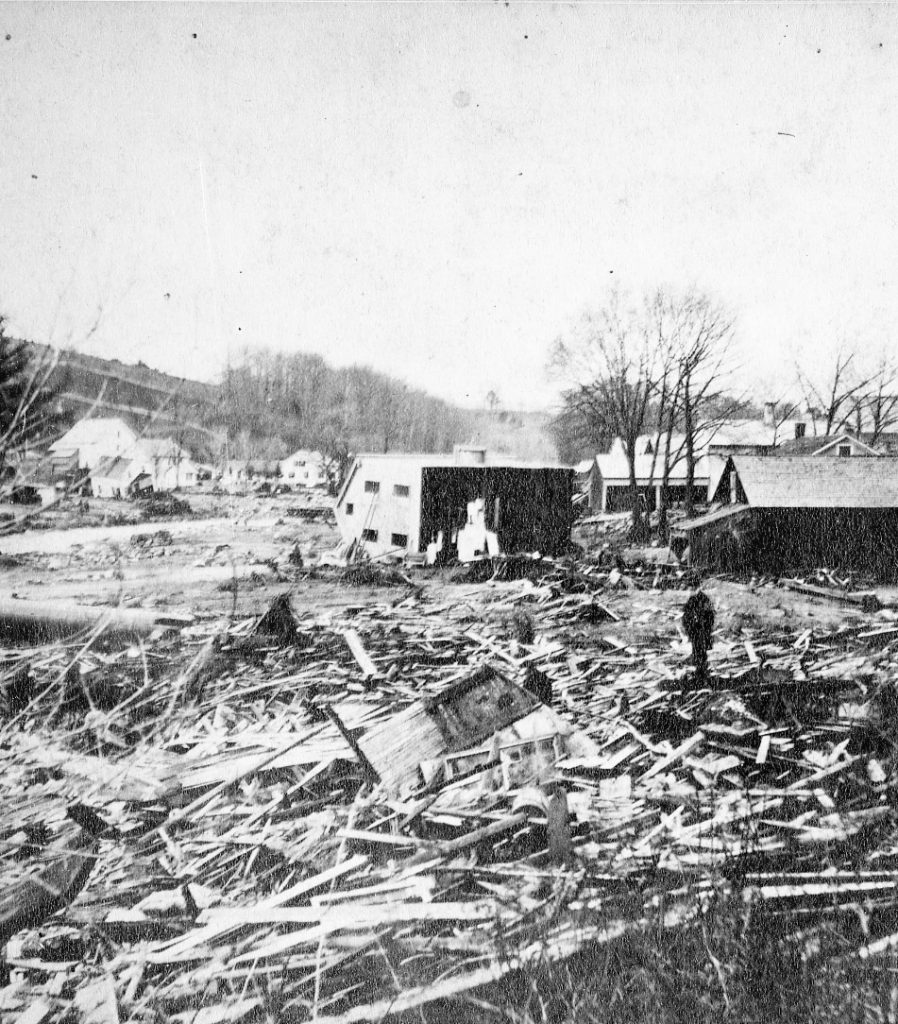
Catastrophic dam failures have occurred in the United States for well over a century, resulting in the deaths of thousands of people and causing millions of dollars in damages. This year, we narrowly avoided a disaster when California’s Oroville Dam stabilized after threatening to fail. During the crisis, over 188,000 people were displaced due to mandatory evacuations of the area. Although the Oroville Dam crisis thankfully ended without loss of life, the cost to repair the spillway is estimated to be $275 million. In 2003, the Silver Lake Dam in Michigan failed, causing approximately $100 million in property damages and putting over a thousand miners out of work. In 2004, the Big Bay Lake Dam in Mississippi failed, destroying 48 homes and seriously damaging 53 others. In 2006, the Ka Loko Dam in Hawaii failed, killing seven people and releasing nearly 400 million gallons of water, causing significant property and environmental damage.
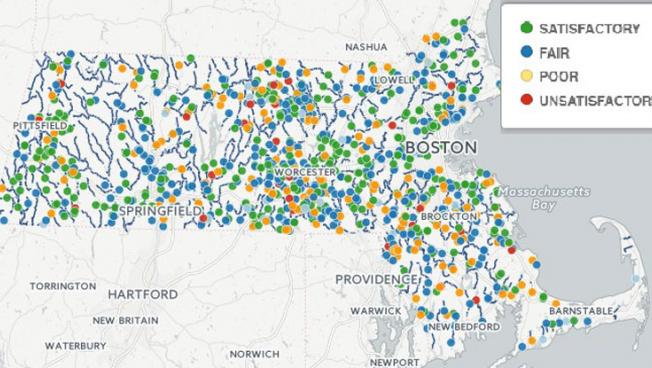
High-hazard dams are cause for concern in every state in the nation. In Massachusetts, 1,453 dams are included in the National Inventory of Dams, 333 of which are high-hazard. Of those, about 50 are classified as “poor” or “unsatisfactory” and in urgent need of repair. If any of these dams were to fail, there is a high likelihood that there would be a loss of human life. Dam failure is most frequently caused by overtopping, accounting for 34% of all dam failures. Causes of overtopping include inadequate spillway design, blocked spillways, settlement of the dam crest, and floods exceeding dam capacity. Other causes of dam failure include foundation defects such as slope instability and settlement (30%); piping, resulting in internal erosion caused by seepage (20%); and other causes including structural failure of materials, settlement and resulting cracking, poor maintenance, and acts of sabotage (16%).
Safety Programs
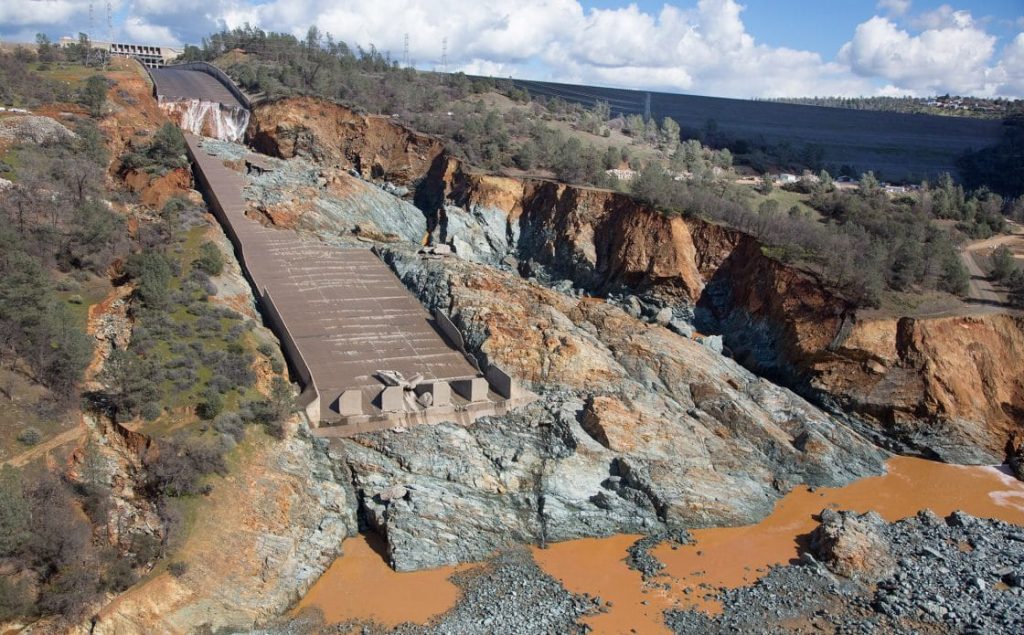
The National Dam Safety Program (NDSP) was signed into law in 1996. NDSP was established to improve safety and security around dams by providing assistance grants to state dam safety agencies to assist them in improving their regulatory programs; funding research to enhance technical expertise as dams are built and rehabilitated; establishing training programs for dam safety inspectors; and creating a National Inventory of Dams. Every state in the nation excepting Alabama has a dam safety program, and 41 states also have Emergency Action Plan (EAP) requirements. A detailed and up-to-date EAP is critical to a successful dam safety program for high-hazard and significant-hazard dams. States without EAP requirements are Alabama, Georgia, Illinois, Iowa, Kentucky, North Carolina, Vermont, Wyoming, and — believe it or not — California.
Unfortunately, about one-third of our nation’s high-hazard dams lack an EAP. In addition, state dam safety programs are sorely underfunded and understaffed, and many of our nation’s deficient dams are not being repaired or rehabilitated in a timely manner. Why? State dam safety programs provide the inspection, permitting, recommendations, and enforcement authority for 80% of our nation’s dams, yet the average ratio of dams to dam safety inspectors is 207:1. Also, about two-thirds of our nation’s dams are privately-owned. Without enforcement of repair recommendations, some dam owners simply choose not to sink any money into their deficient dam.
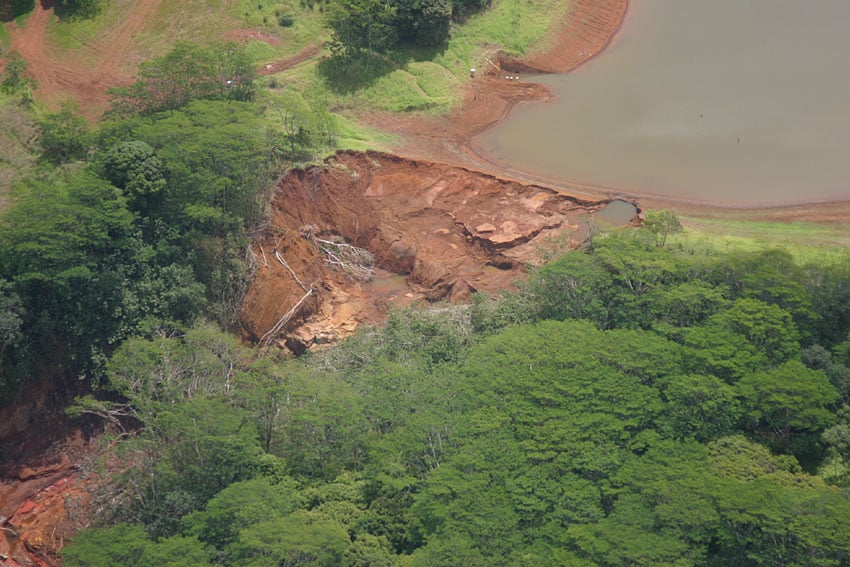
For example, the Ka Loko Dam in Hawaii was privately-owned, and owner James Pflueger was sentenced to seven months in prison in exchange for a plea of no contest to reckless endangering. By entering the plea, prosecutors agreed to drop the seven counts of manslaughter. But admittedly, the dam failure was the result of a series of negligent events. The State of Hawaii, like most states in the nation, had a shortage of dam inspectors, and the Ka Loko Dam had not been adequately inspected. Also, Pflueger performed unpermitted construction activities at the dam, including grading and filling in the spillway. The County of Kauai ordered Pflueger to cease and desist all illegal grading operations, yet Pflueger ignored the order with help from then-Mayor Maryann Kusaka, who served as mayor of Kauai from 1997-2004. He also knew that there was seepage at the dam prior to the failure.
Key Issues
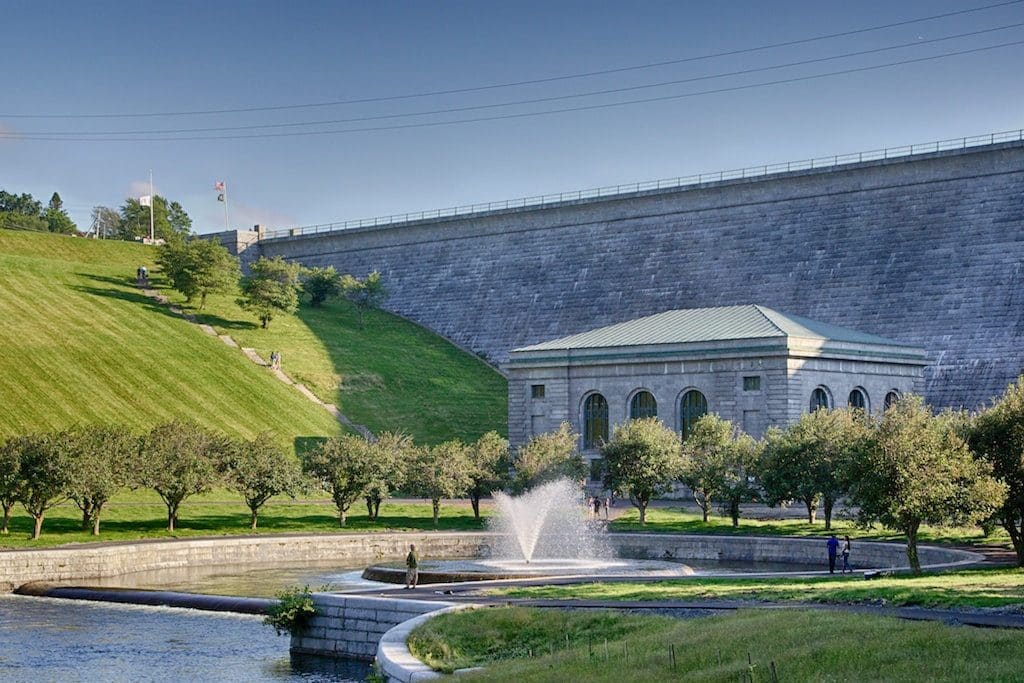
Clearly, the Ka Loko Dam failure was due to gross negligence and was completely avoidable. To avoid similar tragedies in the future, all of the key issues facing our nation’s dams should be addressed. First and foremost, our country needs to invest in infrastructure and to prioritize funding of dam safety programs. It is imperative that dam safety agencies have adequate personnel and resources to enforce inspection, repair, and rehabilitation recommendations. Also, since two-thirds of our nation’s dams are privately-owned, lack of funding for private dam upgrades is a huge problem. Adequate maintenance and rehabilitation of dams is costly, ranging from thousands to millions of dollars, and many private owners simply cannot afford these costs. Because of the high risk of high-hazard dams, our nation must prioritize funding assistance and loan programs to both public and private owners. It is also crucial that high-hazard dams have an up-to-date EAP, including action plans as well as notification and evacuation procedures, so that authorities are prepared and residents living downstream of the dam are protected. And speaking of residents, public outreach and awareness may be the most critical component of dam safety and awareness. The typical American citizen has no understanding of the role that dams play in our lives, or of the devastation that could come about from a dam failure. Even developers and officials are often in the dark about dams in their own communities. And, of course, everyone needs to understand that all high-hazard dams, no matter how seemingly structurally sound, are potentially dangerous and that there is inherent risk living in a dam break flood-prone area. Also, many of the private dam owners in our country are largely unaware of both their responsibility toward residents and businesses located downstream of their dam and of proper dam maintenance and repair procedures.
In Conclusion
We must change the way we manage our nation’s dams in order to prevent future catastrophes. The recent Oroville Dam crisis should serve as a warning to residents and legislators. As our dams age and climate change increases severe weather events, we must invest in the oversight, funding, and awareness of this critical infrastructure. Until we do, events such as the Oroville Dam crisis and the Ka Loko Dam failure may occur with increasing frequency, resulting in loss of life, environmental damage, and economic disaster.

 Earth Day is celebrated by over one billion people globally on April 22 each year. Credited as being the catalyst for the modern environmental movement, Earth Day was first celebrated in the United States in 1970. The Clean Air Act was passed later in 1970, the
Earth Day is celebrated by over one billion people globally on April 22 each year. Credited as being the catalyst for the modern environmental movement, Earth Day was first celebrated in the United States in 1970. The Clean Air Act was passed later in 1970, the 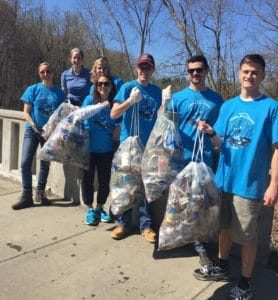
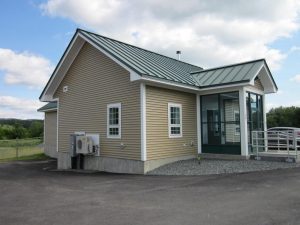
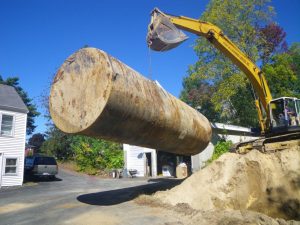
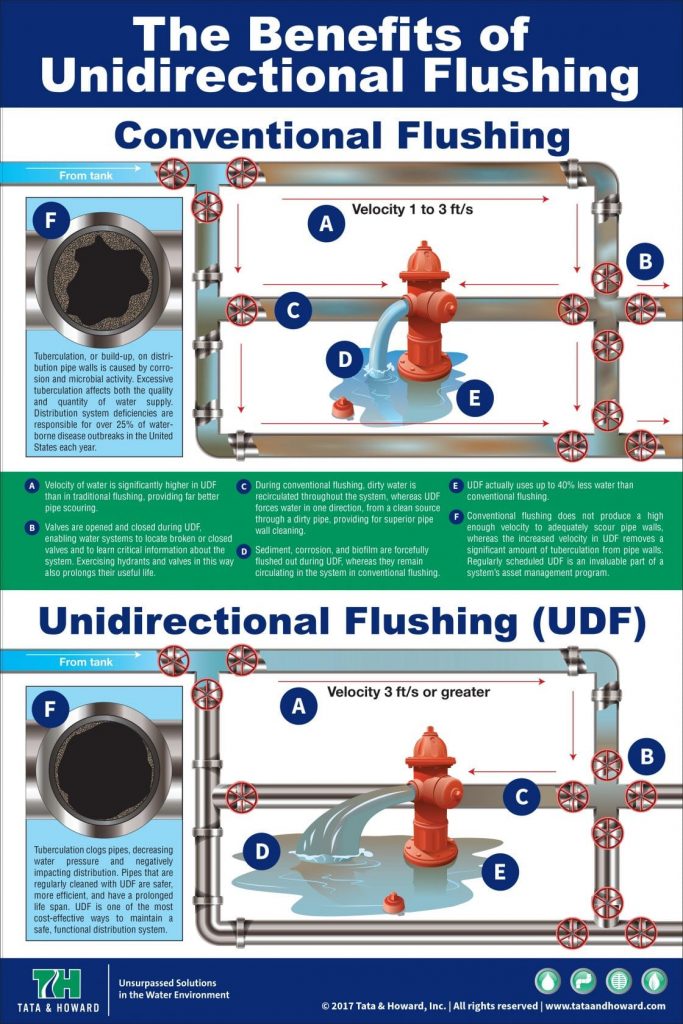
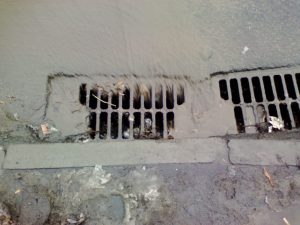 Stormwater runoff is a concern year-round, but even more so in the spring when snow is melting and rain is abundant, particularly in humid continental climates. Stormwater starts as precipitation such as snow, sleet, and rain, which lands on natural ground cover such as forests, grass, or gardens. In a natural environment, stormwater soaks into the ground and is filtered by layers of dirt and rock, then finds its way to our groundwater and drinking water supply. Due to urbanization, stormwater in developed areas does not land on natural ground cover but instead washes off roads, driveways, parking lots, rooftops, and other impervious surfaces, becoming stormwater runoff. Stormwater runoff picks up road salt, chemicals, oil, bacteria, sewage, sediment, and garbage, then washes these pollutants into ditches and storm drains, contaminating our streams, rivers, ponds, and lakes. To make matters worse, climate change exacerbates stormwater runoff and contributes greatly to the impairment of surface water supplies.
Stormwater runoff is a concern year-round, but even more so in the spring when snow is melting and rain is abundant, particularly in humid continental climates. Stormwater starts as precipitation such as snow, sleet, and rain, which lands on natural ground cover such as forests, grass, or gardens. In a natural environment, stormwater soaks into the ground and is filtered by layers of dirt and rock, then finds its way to our groundwater and drinking water supply. Due to urbanization, stormwater in developed areas does not land on natural ground cover but instead washes off roads, driveways, parking lots, rooftops, and other impervious surfaces, becoming stormwater runoff. Stormwater runoff picks up road salt, chemicals, oil, bacteria, sewage, sediment, and garbage, then washes these pollutants into ditches and storm drains, contaminating our streams, rivers, ponds, and lakes. To make matters worse, climate change exacerbates stormwater runoff and contributes greatly to the impairment of surface water supplies.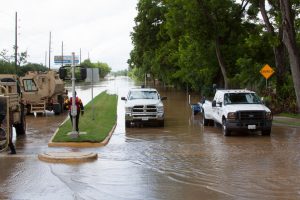

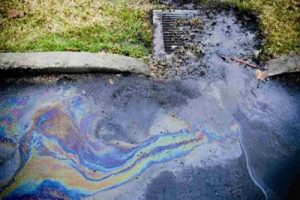 Unfortunately, the above-mentioned factors will likely lead to an increase in stormwater runoff and its accompanying problems. Municipal stormwater systems, already faced with increased nutrient regulations, will likely become overwhelmed, resulting in backups, localized flooding, and increased runoff of contaminants such as bacteria and nutrients into waterways. Also, combined stormwater and wastewater systems overwhelmed by extreme precipitation will release more combined sewer overflows (CSOs) into our rivers, lakes, and streams, degrading water quality and affecting aquatic life. At the same time, drought exacerbates the problem by lowering water levels, leading to more concentrated levels of pollutants in our waterways. These combined factors cause water quality deterioration and create major problems for water treatment plants. Already facing dwindling budgets, municipalities will have difficulty meeting water quality standards if stormwater runoff continues to increase unabated.
Unfortunately, the above-mentioned factors will likely lead to an increase in stormwater runoff and its accompanying problems. Municipal stormwater systems, already faced with increased nutrient regulations, will likely become overwhelmed, resulting in backups, localized flooding, and increased runoff of contaminants such as bacteria and nutrients into waterways. Also, combined stormwater and wastewater systems overwhelmed by extreme precipitation will release more combined sewer overflows (CSOs) into our rivers, lakes, and streams, degrading water quality and affecting aquatic life. At the same time, drought exacerbates the problem by lowering water levels, leading to more concentrated levels of pollutants in our waterways. These combined factors cause water quality deterioration and create major problems for water treatment plants. Already facing dwindling budgets, municipalities will have difficulty meeting water quality standards if stormwater runoff continues to increase unabated.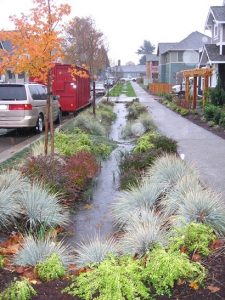


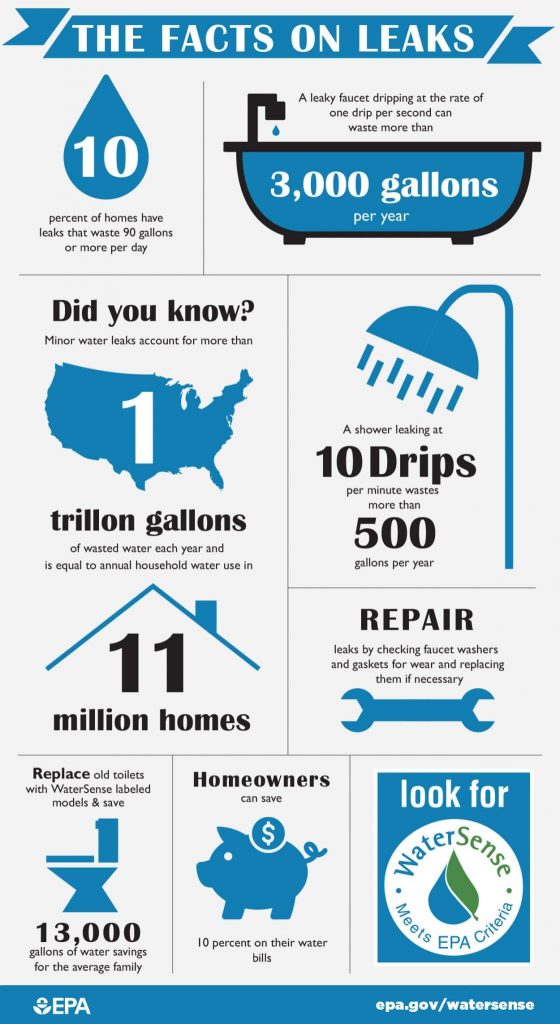
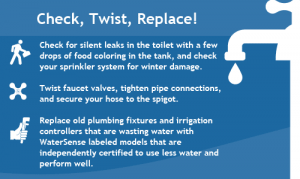 A good method to check for leaks is to examine your winter water usage. It’s likely that a family of four has a serious leak problem if its winter water use exceeds 12,000 gallons per month.
A good method to check for leaks is to examine your winter water usage. It’s likely that a family of four has a serious leak problem if its winter water use exceeds 12,000 gallons per month.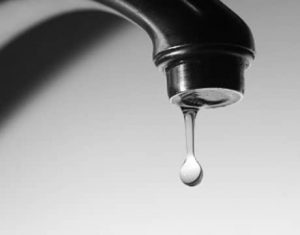 A leaky faucet that drips at the rate of one drip per second can waste more than 3,000 gallons per year. That’s the amount of water needed to take more than 180 showers!
A leaky faucet that drips at the rate of one drip per second can waste more than 3,000 gallons per year. That’s the amount of water needed to take more than 180 showers!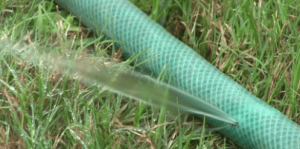 An irrigation system should be checked each spring before use to make sure it was not damaged by frost or freezing.
An irrigation system should be checked each spring before use to make sure it was not damaged by frost or freezing.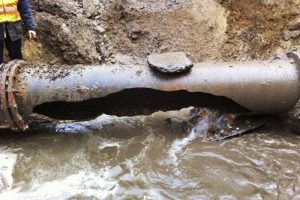
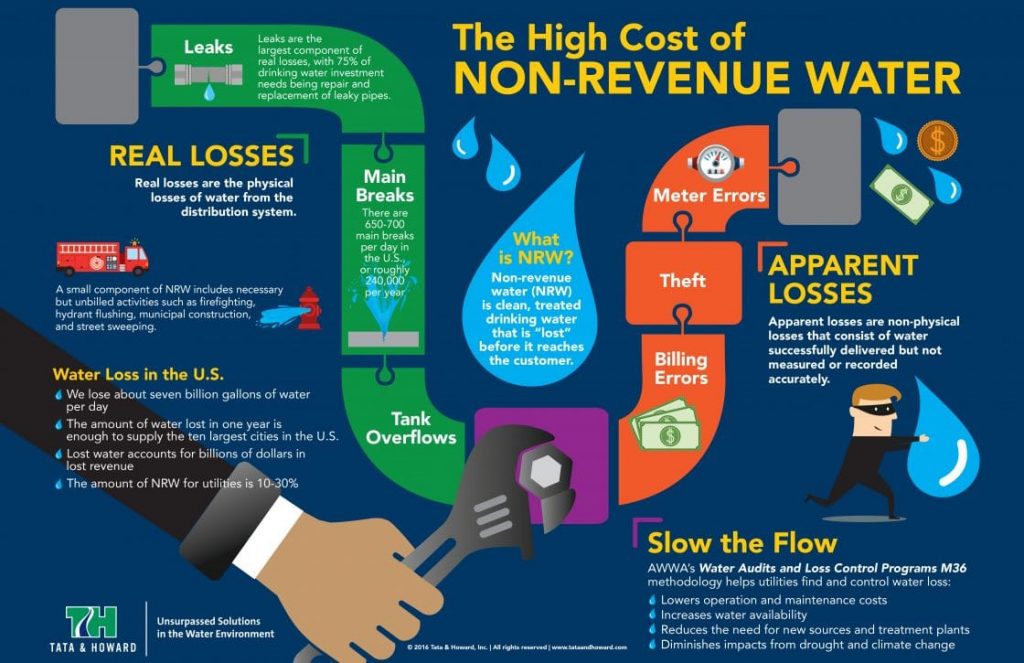 Feel free to share the above infographic (with attribution),
Feel free to share the above infographic (with attribution), 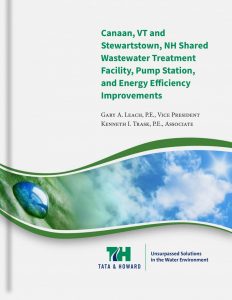
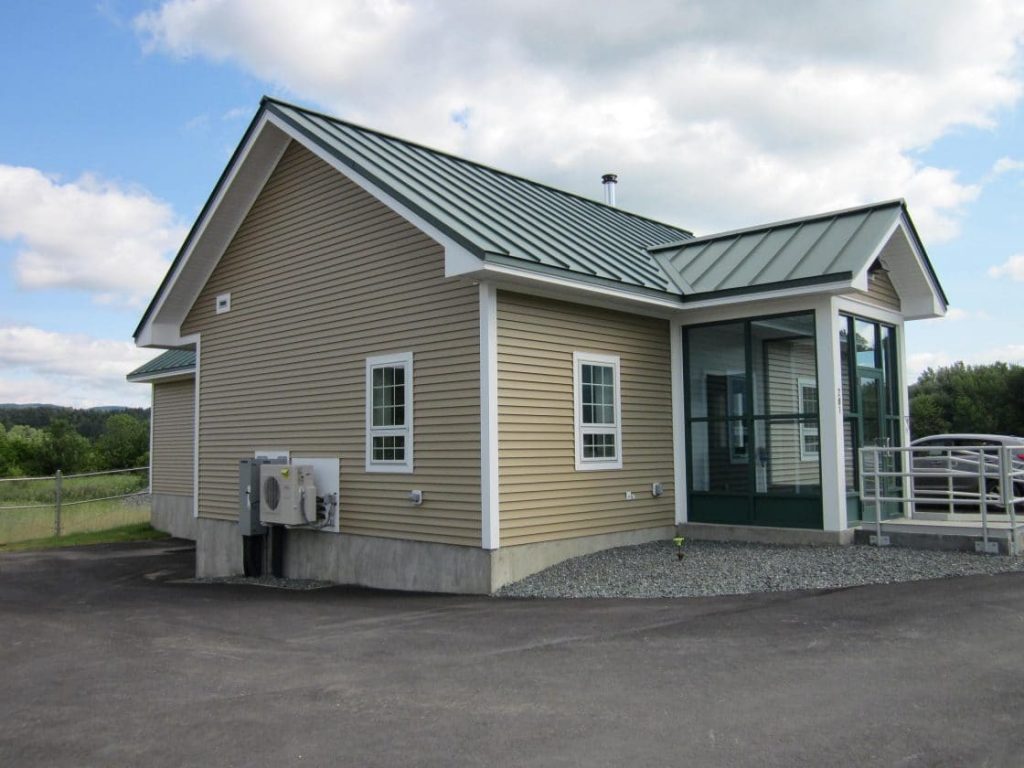
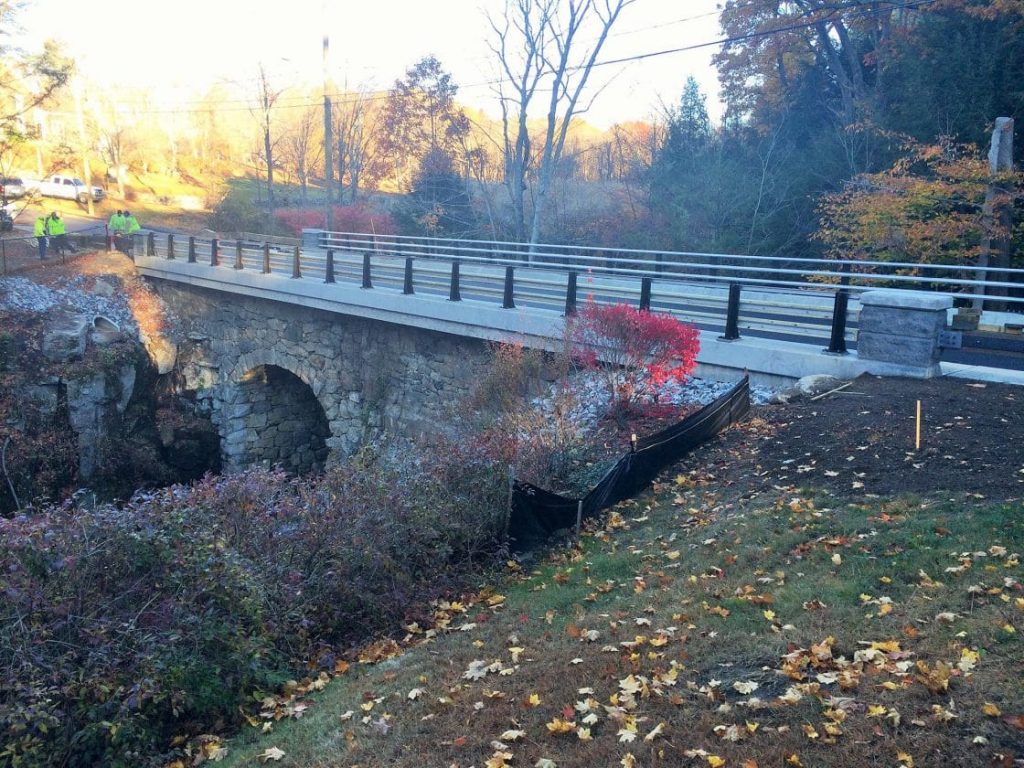
 Modern-day, developed nations use an exorbitant amount of chemicals for a variety of reasons. Some of these chemicals are used to prevent and treat illness, to reduce pain from injury or surgery, to treat mental health issues, and for hygiene, grooming, and cosmetic reasons. Commonly referred to as Pharmaceutical and Personal Care Products, or PPCPs, these products include prescription and over-the-counter medications, cosmetics, fragrances, face and body washes, sunscreens, insect repellants, and lotions.
Modern-day, developed nations use an exorbitant amount of chemicals for a variety of reasons. Some of these chemicals are used to prevent and treat illness, to reduce pain from injury or surgery, to treat mental health issues, and for hygiene, grooming, and cosmetic reasons. Commonly referred to as Pharmaceutical and Personal Care Products, or PPCPs, these products include prescription and over-the-counter medications, cosmetics, fragrances, face and body washes, sunscreens, insect repellants, and lotions. PPCPs and EDCs enter our waterways through sewage, leachate from landfills and septic systems, flushing of unused medications, and agricultural runoff, and they have the potential to cause a myriad of problems. While there has not yet been a truly significant amount of research completed on all of these products and chemicals, some facts are known. For example, excessive antibiotic use has led to the development of “superbugs,” or bacteria such as MRSA that are resistant to most antibiotics.
PPCPs and EDCs enter our waterways through sewage, leachate from landfills and septic systems, flushing of unused medications, and agricultural runoff, and they have the potential to cause a myriad of problems. While there has not yet been a truly significant amount of research completed on all of these products and chemicals, some facts are known. For example, excessive antibiotic use has led to the development of “superbugs,” or bacteria such as MRSA that are resistant to most antibiotics. 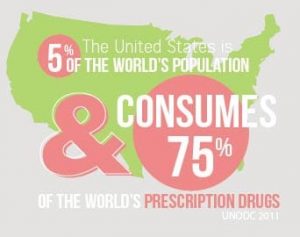 Some of the most common EDCs in drinking water include estrogen and progesterone from birth control pills, as well as anabolic steroids. These compounds interfere with the reproductive capabilities of aquatic wildlife. Examples include eggshell thinning and subsequent reproductive failure of waterfowl; reduced populations of Baltic seals due to lower fertility and increased miscarriage; development of male reproductive organs in female marine animals, such as snails; feminization and subsequent decreased populations of certain types of fish, including bass; and reduced or malformed frog populations.
Some of the most common EDCs in drinking water include estrogen and progesterone from birth control pills, as well as anabolic steroids. These compounds interfere with the reproductive capabilities of aquatic wildlife. Examples include eggshell thinning and subsequent reproductive failure of waterfowl; reduced populations of Baltic seals due to lower fertility and increased miscarriage; development of male reproductive organs in female marine animals, such as snails; feminization and subsequent decreased populations of certain types of fish, including bass; and reduced or malformed frog populations.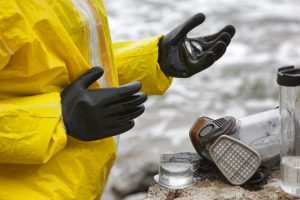 Currently, most PPCPs and EDCs are not regulated at either the state or federal level; however, they are being investigated by the Environmental Protection Agency (EPA) as Contaminants of Emerging Concern. Because PPCPs and EDCs appear to hinder reproduction in marine life, many state environmental organizations strongly support additional research and potential regulation on these compounds. In 2006, Massachusetts became the first state in the nation to set drinking water and cleanup standards for the known EDC perchlorate after it had been detected in the state’s drinking water, and many states have implemented public education campaigns on these compounds, their effects, and their proper disposal.
Currently, most PPCPs and EDCs are not regulated at either the state or federal level; however, they are being investigated by the Environmental Protection Agency (EPA) as Contaminants of Emerging Concern. Because PPCPs and EDCs appear to hinder reproduction in marine life, many state environmental organizations strongly support additional research and potential regulation on these compounds. In 2006, Massachusetts became the first state in the nation to set drinking water and cleanup standards for the known EDC perchlorate after it had been detected in the state’s drinking water, and many states have implemented public education campaigns on these compounds, their effects, and their proper disposal. On an individual level, taking small, simple steps can have a large impact on the amount of PPCPs and EDCs in our water supply:
On an individual level, taking small, simple steps can have a large impact on the amount of PPCPs and EDCs in our water supply:
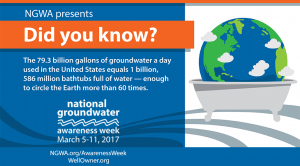 Life as we know it would be impossible without groundwater, or the water that fills cracks, voids, and other openings in soil, sand, and bedrock. About 99% of the available freshwater on Earth is groundwater. Because of this, it is the world’s most extracted natural resource, at the rate of about 259 trillion gallons per year, with about 60% of that withdrawal going towards agriculture. Groundwater also supports our world’s ecosystems. People with wells use groundwater for drinking water, and most groundwater flows directly into streams, rivers, and lakes from beneath.
Life as we know it would be impossible without groundwater, or the water that fills cracks, voids, and other openings in soil, sand, and bedrock. About 99% of the available freshwater on Earth is groundwater. Because of this, it is the world’s most extracted natural resource, at the rate of about 259 trillion gallons per year, with about 60% of that withdrawal going towards agriculture. Groundwater also supports our world’s ecosystems. People with wells use groundwater for drinking water, and most groundwater flows directly into streams, rivers, and lakes from beneath.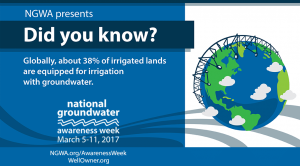 If you own a private water well, have your water tested annually or if there is a change in the odor, taste, or smell.
If you own a private water well, have your water tested annually or if there is a change in the odor, taste, or smell.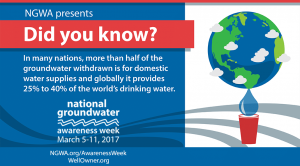 Groundwater is essential to human life and a healthy environment. Not only is it imperative that we protect groundwater from contamination by chemicals and waste, but it is also important to remember to conserve water wherever we can. Groundwater sources are being withdrawn at a faster rate than they are being replenished, and we cannot continue to utilize our world’s most precious resource with such abandon. Help NGWA spread the word during National Groundwater Awareness Week to ensure we all remember to do our part.
Groundwater is essential to human life and a healthy environment. Not only is it imperative that we protect groundwater from contamination by chemicals and waste, but it is also important to remember to conserve water wherever we can. Groundwater sources are being withdrawn at a faster rate than they are being replenished, and we cannot continue to utilize our world’s most precious resource with such abandon. Help NGWA spread the word during National Groundwater Awareness Week to ensure we all remember to do our part.